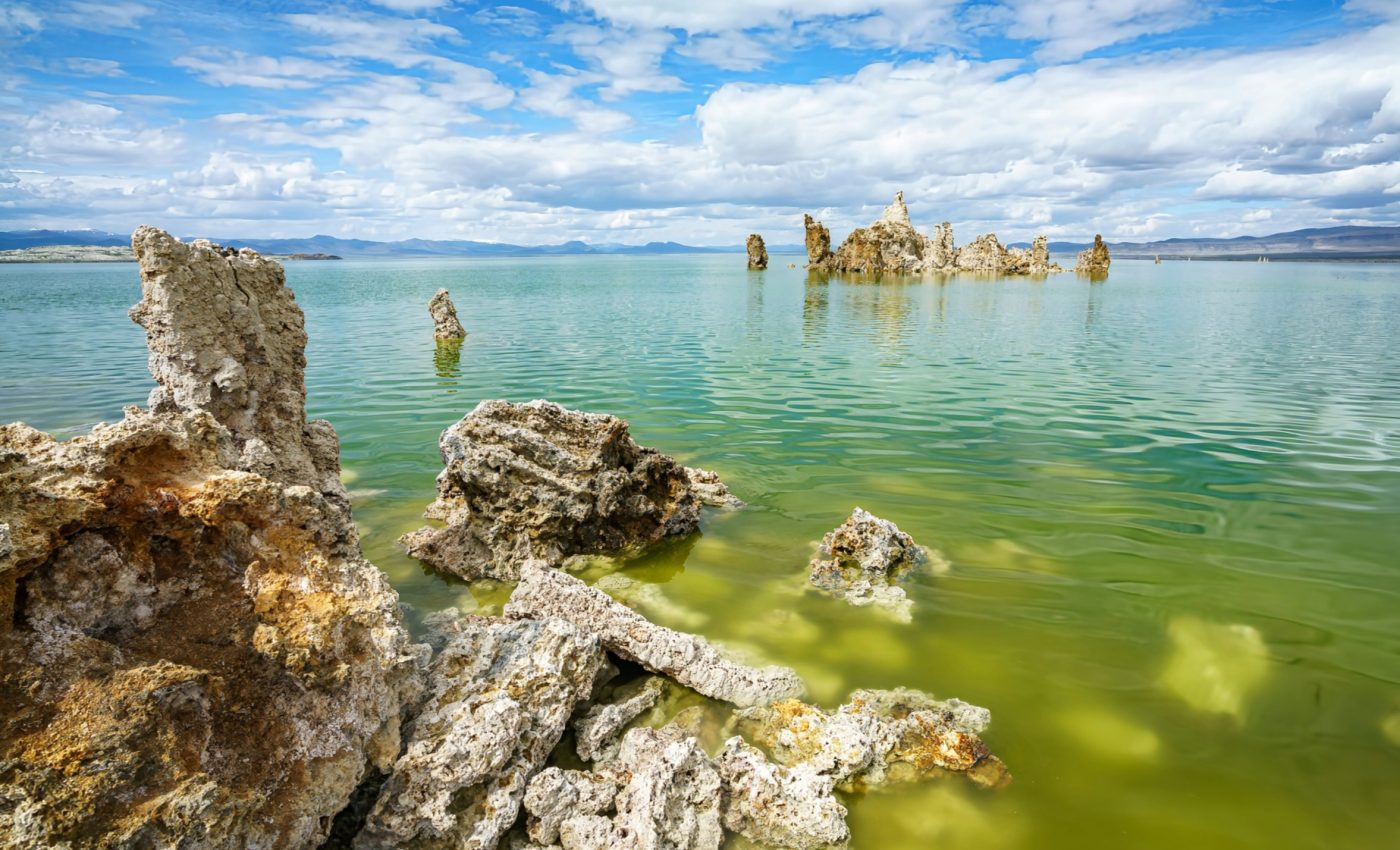
Tiny creature found in Mono Lake sheds light on animal evolution
Deep within the brackish waters of the Eastern Sierra Nevada’s Mono Lake, a remarkable discovery has been made.
Nestled among the lake’s celebrated tufa formations and abundant brine shrimp, researchers have uncovered an intriguing and unusual creature.
The invisible residents of Mono Lake
Hidden within the lake’s salty embrace, a team of researchers from the University of California, Berkeley came across a microscopic, single-celled life form known as a choanoflagellate.
These tiny organisms have the ability to divide and develop into multicellular colonies, similar to the process by which animal embryos form.
While not classified as animals themselves, choanoflagellates stand as a key model for understanding the transition from one-celled to multicellular existence.
More intriguingly, this particular choanoflagellate – the first of its kind known to science – was found to harbor its own microbiome, establishing a stable physical relationship with bacteria.
This is an extraordinary discovery, as the creature is considered one of the simpler organisms known to possess a microbiome.
Organisms that predate animal evolution
“Very little is known about choanoflagellates, and there are interesting biological phenomena that we can only gain insight into if we understand their ecology,” said Nicole King, a prominent UC Berkeley professor who studies these fascinating creatures.
The study takes us back more than 650 million years, attempting to unveil the origin of animals. Often overlooked by marine biologists, these microscopic entities hold clues to understanding ancient oceans teeming with organisms that predate the evolution of animals.
Studying choanoflagellates could potentially provide answers on the origins of interactions between animals and bacteria, leading to the development of the human microbiome.
“Animals evolved in oceans that were filled with bacteria,” said Professor King. “If you think about the tree of life, all organisms that are alive now are related to each other through evolutionary time. So if we study organisms that are alive today, then we can reconstruct what happened in the past.”
A surprising symbiotic relationship
Digging deeper into the mysterious life of choanoflagellates, the researchers made another unexpected discovery. The presence of bacterial DNA was detected inside the hollow colony.
Further investigation revealed that these were not the remnants of bacteria consumed by the choanoflagellates, but rather bacteria living and grazing within the colony. This symbiotic relationship is the first of its kind to be documented within a choanoflagellate.
The comprehension of this unique symbiosis could be a stepping stone to understanding the role bacteria play in influencing the behavior of choanoflagellates, such as mating and colony formation.
Delicate web of life in Mono Lake
Despite the challenges of procuring samples from Mono Lake, the research team is eager to continue exploring the fascinating microbial life within its secluded waters.
“I’m excited about this new species as a potential model for studying interactions between eukaryotes and bacteria. And I hope it tells us something about evolution. But even if it doesn’t, I think it’s a fascinating phenomenon,” said Professor King.
The discovery of this unusual choanoflagellate offers a new lens through which we can witness the intertwined relationships between microorganisms and their environment, ultimately revealing the delicate web of life that shapes our ecosystems and potentially, our evolutionary history.
Broader implications of the research
Choanoflagellate and their symbiotic relationship with bacteria could have far-reaching implications for modern science and medicine.
Understanding how single-celled organisms interact with bacteria may provide insights into the early stages of multicellularity and its evolutionary advantages.
Additionally, this research could shed light on complex interactions within the human microbiome, potentially leading to advancements in treating diseases linked to microbial imbalances.
Researchers are hopeful that further studies of Mono Lake’s microbial life will uncover additional organisms and symbiotic relationships that can inform our understanding of life’s evolution on Earth.
As scientists continue to investigate these ancient connections, we may unlock new strategies to harness beneficial bacteria in medicine, agriculture, and environmental conservation, offering a glimpse into a future where the lessons of the past guide innovations in our modern world.
The study is published in the journal mBio.
—–
Like what you read? Subscribe to our newsletter for engaging articles, exclusive content, and the latest updates.
Check us out on EarthSnap, a free app brought to you by Eric Ralls and Earth.com.
—–













